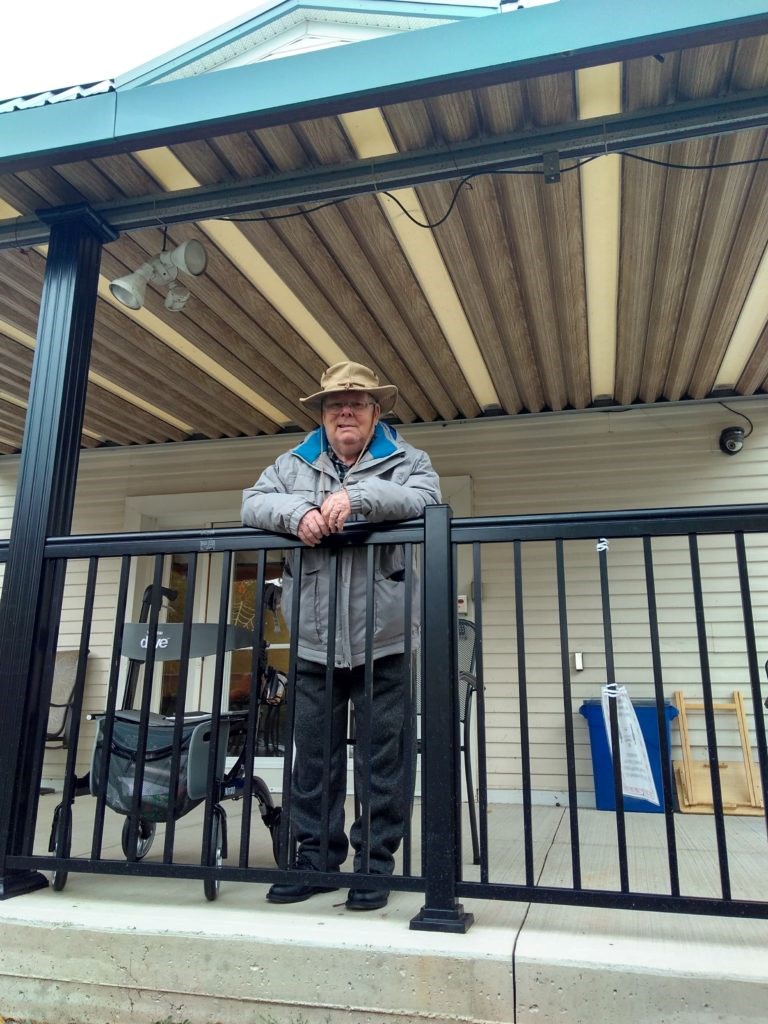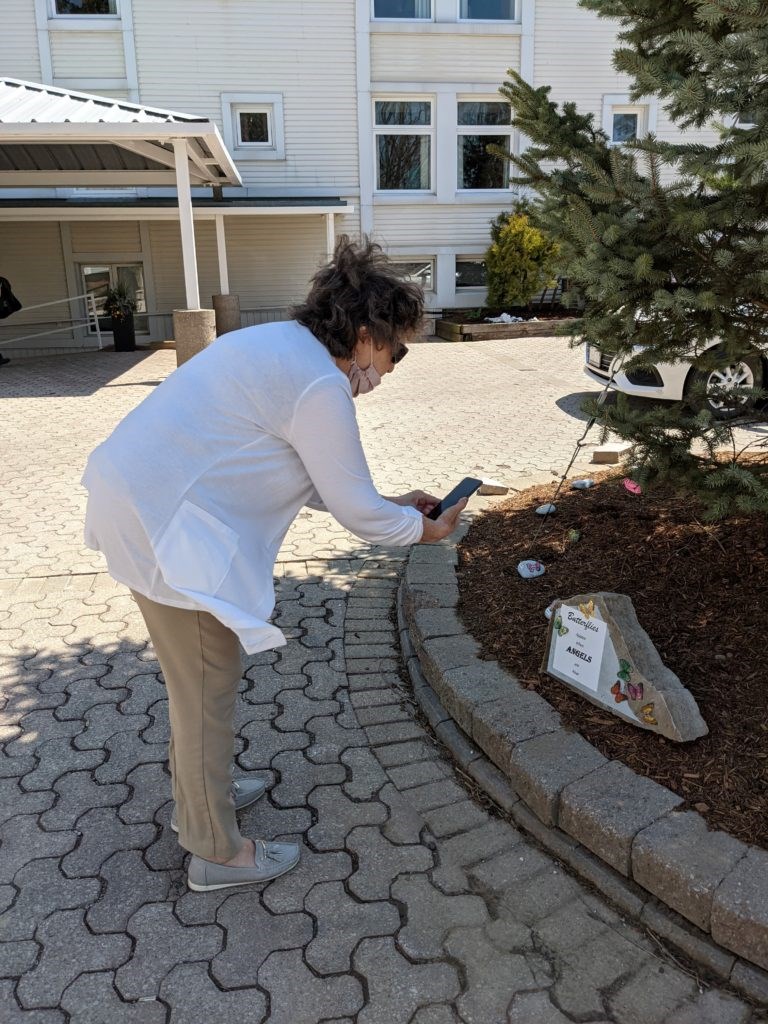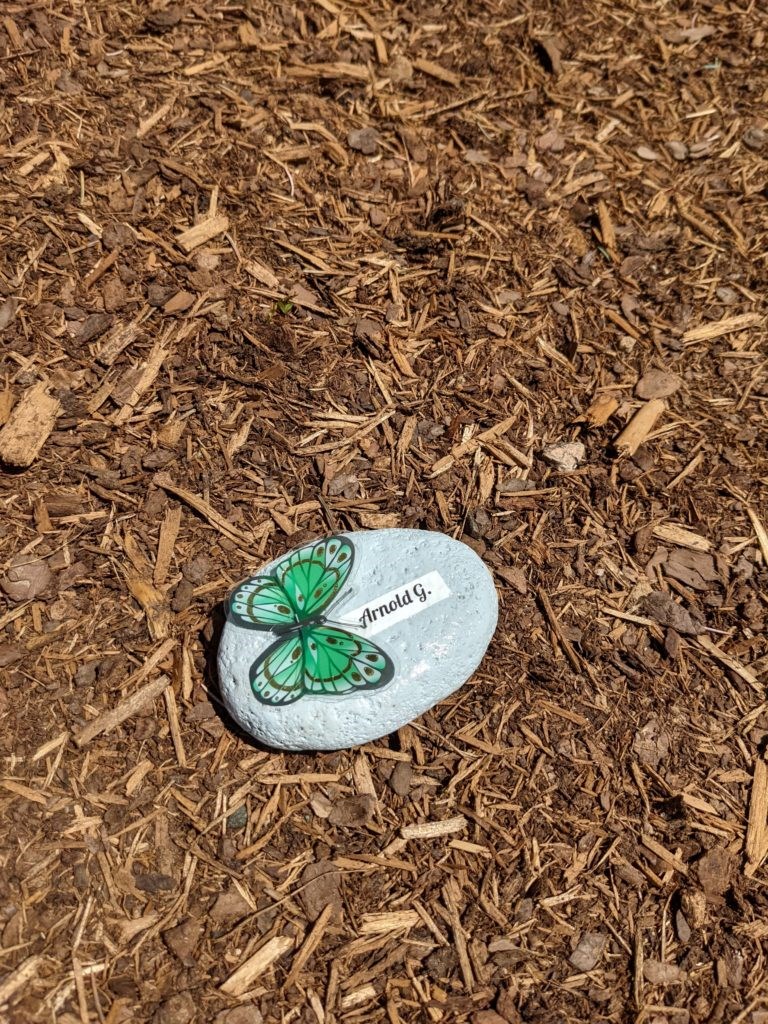
Although vaccinations have greatly reduced the number of residents dying of COVID in long-term care, they arrived too late to save almost 4,000 seniors who were infected in one of the homes across Ontario.
Arnold German, long-time Niagara-on-the-Lake resident, was one of them, his death a result of an outbreak early this year at Niagara Long Term Care on Wellington Street.
“They had done really well, right up until early January,” says his daughter, Georgina German Keller. “We were really happy with the home, and we thought we were coming out of COVID. They had kept their residents safe for 10 months. But once it hit, it spread like wildfire.”
Her father died Jan. 31, at the home, after a short stay at the Niagara Falls hospital.
All three long-term care homes in NOTL had managed to escape the infection until that point, although Pleasant Manor also battled through a much more contained outbreak around the same time.
At Niagara Long Term Care, Keller says, the outbreak began on the third floor, which is the most secure, for residents suffering from dementia. With a high number of community cases at that time, COVID was introduced by a staff member, who tested positive Jan. 2, and very quickly, protocols were put into place to reduce its spread.
Keller says there were regular online meetings to update family members of all residents, and they were encouraged to call with any questions. They were told staff working on the third floor would be entering and exiting from a separate entrance, and staying on that floor, so there would be no movement throughout the three-storey home that might spread infection.
They also started keeping residents in their own rooms, including at meal time, which was difficult for some, like her dad, who was accustomed to more freedom.
“I think they were trying, and doing a good job. They were bringing in extra staff. Not being allowed in there at the time, it’s hard to say what more they could have done. But they can’t prevent staff from coming in sick if they don’t know they have COVID. And once it gets in there, it’s like a tidal wave.”
Online the home is listed as having 120 beds, only 27 of them private rooms, although at the time, she says, there were only about 90-plus residents.
To reduce spread, those who tested positive were separated from others, and the home tried to minimize rooms to two people.
Her father, 82 years old and in the early stages of dementia, had been at the home for about two years. He had health issues, and had had several falls, that meant family couldn’t care for him at home.
Although he wasn’t happy to be there, Keller and her mother, Dorothy, were able to visit him often, and take him out for visits, including for Christmas 2019.
When the pandemic put an end to that, it was difficult not being able to go into the home to visit, and the rules seemed to change often, said Keller. There were times when her mother, if she had a COVID test, could go in to see him, and last summer, they were able to take him out for a picnic.
“There were so many changes in the restrictions, constantly changing what we could do,” she says.
Keller has four siblings, but they are scattered, she said, leaving her and Dorothy to look after Arnold.
“He loved to sit outside on the patio, and we’d go to the parking lot to visit with him from there. He kept asking when he was coming home.”
Dorothy went to live in a ground-floor apartment in Pleasant Manor, where she keeps busy, and has friends around her for company. In the good weather, she has a little patio where she can sit out as well, and still driving, she can visit Keller and her family and do her own errands and shopping. She also continued to be an advocate for Arnold — he had relied on his wife for everything, says Keller.
When COVID hit, he was sharing a room with one other person on the second floor, and at first the German family felt he was relatively safe from the risk of infection.
But that didn’t last long. They were soon told his roommate had tested positive, and he was being tested as well. It took about five days for the family to learn the results. While they were waiting to hear the outcome of the test, Arnold was starting to feel unwell, and the number of cases was skyrocketing.
In 10 days, she says, it had moved from the third floor to the second, and in six weeks there were 13 residents who had died. “He was number 11,” says Keller.
“We had seen him on Christmas Day, when we sat outside with him and had a visit. He was still very aware of what was going on around him. He never got to the point where he didn’t know us. He knew his grandchildren as well. He was okay on the second floor, still fairly independent, needing care for things like medication, and he was mobile, with a walker. If he hadn’t got COVID, he probably could have lasted another five years.”
And if the vaccinations had arrived just a little sooner, at the beginning of January, “it might have been a different story.”
But as other residents were being vaccinated, her father, by then separated and in a wing that was dedicated to those already infected, could not be.
Then the family got the call from the home to say he was not doing well, and was being transferred to the Greater Niagara Hospital site of Niagara Health, says Keller.
Shortly after his arrival, a doctor told her by phone that there was nothing they could do for her father, and they needed the bed, so he was being sent back to the residence.
“I was having trouble understanding what he said. I said to the doctor, “you’re telling me he’s going to die,” and he responded that her father had a Do Not Resuscitate order, that he just needed to be kept comfortable, and that could be done at the long-term care home.
“We didn’t know if he had a day or an hour, or if it was going to be a week, just that he was terminal. He was dying. We were told it wouldn’t be long.”
Because he was dying, her mother was offered the opportunity to see him once he returned to the home, but with so many infected residents at that time, they decided not to take the chance, says Keller.
Her father surprised them, living another nine days, while Keller kept her siblings up to date on his condition. At first, he almost seemed to be getting better, but she was told “it could change on the flip of a dime,” and meanwhile, although he was struggling with his breathing, she thinks he was medicated enough that he wasn’t in too much pain. Then, all of a sudden, he went downhill quickly.
During those days, she says, he didn’t have his phone, and wouldn’t have been able to hold it, but they were able to make appointments to call, and the staff helped him FaceTime.
All five of the siblings and her mom were able to talk to him before he died, and had a chance to say their goodbyes.
It was especially hard on her mother, says Keller. “She kept saying she didn’t want him to die alone. She wanted to be with him.”
The family has a strong Christian faith, says Keller, and she was able to say that he wasn’t alone, and that there were other family members, including his brothers, all but one of whom had predeceased him, who loved him and would be there for him.
The staff were very helpful through that difficult time, she says — they had got to know her dad and liked him.
But they were also overwhelmed by what was going on in the home, and without being able to visit, Keller says it was hard to know what was happening inside.
By the end of the pandemic, at least 72 residents tested positive, as well as 22 staff members.

Executive director Chris Poos says they were already following many infection and prevention protocols when the outbreak started. “Once the outbreak was declared, we quickly implemented other protocols that pertained directly to an outbreak, such as, cohorting staff and residents, daily communication with residents, families, and staff, and daily calls with Public Health. Our outbreak was officially declared over at the end of February.”
Under the direction of Public Health, the home follows all guidance provided by them, along with the directives issued by the chief medical officer of health, says Poos. The staff testing protocol across long-term care when our outbreak was declared was weekly testing for all staff. Following the declaration of an outbreak, that increased to two times per week, he says.
“We are very thankful that additional supports have been made available, including rapid testing, which we do three times per week with all staff, and of course the vaccines. We are doing well with resident vaccinations, and are currently at 96 per cent,” says Poos.
“We have all learned so much about the COVID-19 virus, and continue to do so. The sharing of information, increased awareness, support from government, and the on-going support of our families, assist us in providing the best care and services to our residents.”

Keller says her parents had discussed funeral arrangements with their family so they would be prepared, but of course the pandemic put an end to the plans they had made. They had a small burial service at Niagara Lakeshore Cemetery, no church service or visitation, with Dorothy, the five siblings and two grandsons to help out as pallbearers, and Pastor Michelle Mercer of GateWay Community Church, who knows the family and her father.
As hard as it was to lose him, she says, they are able to look at it as somewhat of a blessing, saving him from the downward spiral of dementia.
But that wasn’t the end of COVID for the Keller family. Their daughter Jessica, 21, a university student who was home working as a server in a restaurant, hadn’t been working in January, but went back for a short time, just a few days, before the third lockdown. She began to have some cold-like symptoms recently, and decided to get tested for COVID. A positive result saw her quarantining at home, where she has her own room and bathroom, with Keller dropping off meals for her outside her room. She was fortunate not to develop respiratory problems, but her sense of smell has not completely returned.
None of the people at her workplace tested positive, nor did her boyfriend or any of their friends. Georgina and her husband Gord also got tested, but were negative.
Georgina, who teaches English as a second language to international Brock University students, has been laid off from her job, and isn’t expecting that to change in September — if students return, there won’t be enough for a full component of ESL students, she says. She used to have a sewing business, and may return to that, she says.
Gord has retired from his IT work, and took a job with the Pillar and Post, but has been laid off from that.
Georgina says, looking back, they’re not sure anything could have been done differently for her father. They felt they made the right decision to put him in a facility where he would get 24-hour care, but the pandemic has shown there are issues that need to be improved.
Consistent staff is important, without so much moving around between homes, as is the availability of regular, rapid testing, she says, and paid leave for those who work in long-term care. All of those are issues that are being addressed for all long-term care homes, but were not able to prevent the January outbreak in her father’s home, or the many others across the province.
In the case of Niagara Long Term Care, she’s sure there were good intentions to keep their residents safe.
“These are our elderly, the most vulnerable. It was so sad to watch what happened.”